Sportsman & Bomber Pilot (1910 – 1942)
This short tribute is dedicated to the memory of one of the many brave young men who went missing in action during both World Wars, in his case Horace disappeared during a bombing raid, in January 1942. His early life was also affected by the First World War but by the time he died, aged 31, he had excelled at the sport of rowing (as an amateur) and enjoyed nearly ten years of marriage. Sadly little documentary evidence is left of his life but his story can be told with the aid of some family photographs.
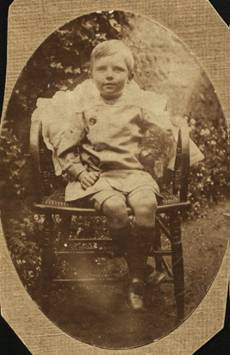 Horace Spencer Edward was the first child of Harold and Charlotte (Florrie) Ellis and was born on 30th September 1910 in Croyden, where, at the time, his father worked managing the Grocery business set up by Horace’s grandfather Spencer Ellis . He is pictured here in 1914. He was named after a family friend, Horace Larby, a Member of Parliament. The second photograph, taken in 1916, shows him with his baby sister Dorothy,
Horace Spencer Edward was the first child of Harold and Charlotte (Florrie) Ellis and was born on 30th September 1910 in Croyden, where, at the time, his father worked managing the Grocery business set up by Horace’s grandfather Spencer Ellis . He is pictured here in 1914. He was named after a family friend, Horace Larby, a Member of Parliament. The second photograph, taken in 1916, shows him with his baby sister Dorothy,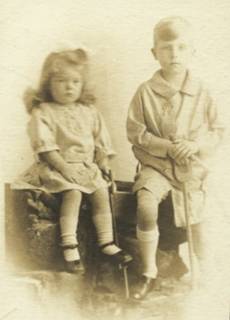 who had been born in February of 1914, by which time the family had moved to Shepherds Bush. Later that year, shortly after the outbreak of the First World War, their father volunteered to join the Surrey Regiment. His eldest brother, Howard had died in the Boer War in 1902, whilst serving with the 2 Volunteer Company The Queen’s (Royal West Surrey Regiment). Regimental records show that during the First World War Territorial battalions replaced Regular ones in India (who were redeployed to the Western Front), and the primary task continued to be the guarding of the North-West Frontier where there was recurrent trouble throughout the war. Harold and many of his companions remained on their station in India, without leave, until 1920 – two years after the end of hostilities in Europe – because of the perceived ‘Bolshevik threat’ to the Empire following the Russian Revolution. During these years Horace, his sister and their mother were living with her parents, Edward & Jane Noakes in St Johns Wood where they ran a Greengrocers shop. Their mother was frequently absent due to her war work as the personal telephonist to Lord Northcliffe, owner of The Times Newspaper and director for propaganda for the British Government.
who had been born in February of 1914, by which time the family had moved to Shepherds Bush. Later that year, shortly after the outbreak of the First World War, their father volunteered to join the Surrey Regiment. His eldest brother, Howard had died in the Boer War in 1902, whilst serving with the 2 Volunteer Company The Queen’s (Royal West Surrey Regiment). Regimental records show that during the First World War Territorial battalions replaced Regular ones in India (who were redeployed to the Western Front), and the primary task continued to be the guarding of the North-West Frontier where there was recurrent trouble throughout the war. Harold and many of his companions remained on their station in India, without leave, until 1920 – two years after the end of hostilities in Europe – because of the perceived ‘Bolshevik threat’ to the Empire following the Russian Revolution. During these years Horace, his sister and their mother were living with her parents, Edward & Jane Noakes in St Johns Wood where they ran a Greengrocers shop. Their mother was frequently absent due to her war work as the personal telephonist to Lord Northcliffe, owner of The Times Newspaper and director for propaganda for the British Government.
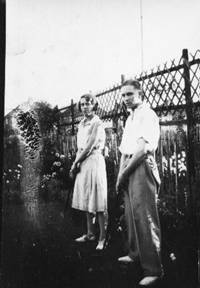 After their father’s return from India in 1920, the family return to their home in Shepherds Bush and Horace was educated at Latymer Upper School. The picture to the left was taken of Horace with his sister Dorothy in 1929 in the garden of their grandfather’s house after he retired and moved to Hounslow.
After their father’s return from India in 1920, the family return to their home in Shepherds Bush and Horace was educated at Latymer Upper School. The picture to the left was taken of Horace with his sister Dorothy in 1929 in the garden of their grandfather’s house after he retired and moved to Hounslow.
Horace married Mabel (May) Boncey in December 1932 and they are shown here standing at the extreme right of the family photograph, below, taken to celebrate his parents’ 25th wedding anniversary.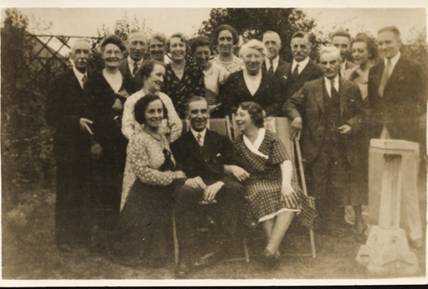 Horace worked for the Times newspaper (on his marriage certificate he is described as a ‘receiving cashier’) and, as a result, he became involved in the Times Rowing Club.
Horace worked for the Times newspaper (on his marriage certificate he is described as a ‘receiving cashier’) and, as a result, he became involved in the Times Rowing Club.
As well as getting married, in 1932, Horace became the Times Rowing Club’s sculling champion and he subsequently finished runner-up in the same event in 1934 and 1936. He also rowed in the eights and was in the winning crew in 1933.
When the Second World War broke out in 1939, Horace joined the Royal Air Force Volunteer Reserve and served in 106 Squadron, flying a  Handley-Page Hampden (pictured left). The photograph, below, commemorated the award of his ‘pilot’s wings’ and was taken shortly before his death. At the time his service rank was Sergeant and he was one of a Hampden’s crew of four: pilot, observer (who navigated and dropped the bombs), gunner / wireless operator and air gunner.
Handley-Page Hampden (pictured left). The photograph, below, commemorated the award of his ‘pilot’s wings’ and was taken shortly before his death. At the time his service rank was Sergeant and he was one of a Hampden’s crew of four: pilot, observer (who navigated and dropped the bombs), gunner / wireless operator and air gunner.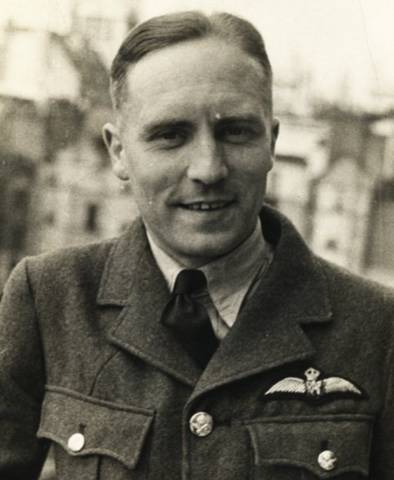
His sister believed that he died during an attempt to bomb the German Battleship Tirpitz, which was hidden in the fjords of Norway and was seen as a significant threat particularly to the arctic convoy routes supplying Soviet Russia. This was plausible because Tirpitz was attacked many times by air (including by Hampdens in 1942), also by surface and sub-surface vessels, including one by X Craft midget submarines but was finally sunk on 12 November 1944 by RAF Lancaster Bombers using their largest bomb, the 12,000 lb ‘Tallboy’. Horace and his crew were among 187 aircraft lost by 106 Squadron during the Second World War. At the time of his disappearance they were based at the RAF aerodrome at Coningsby, Lincolnshire. The Official notification of his death, with its brief details, is shown below.
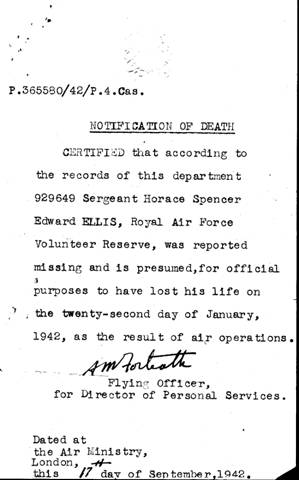 The Hampden was considered obsolete by 1942. The aircraft’s maximum speed was 254 miles per hour; it could carry 4,000 lbs. of bombs for 1,200 miles at a maximum height of 19,000 feet. However, it did prove to be effective at laying mines, missions for which were then officially described as ‘gardening duties’. Recently obtained RAF records revealed that Horace and his crew (Sgt. A.S. Chantrell, Sgt. W. Holland, and Fl. Sgt. S. A. Morrison) disappeared whilst minelaying.
The Hampden was considered obsolete by 1942. The aircraft’s maximum speed was 254 miles per hour; it could carry 4,000 lbs. of bombs for 1,200 miles at a maximum height of 19,000 feet. However, it did prove to be effective at laying mines, missions for which were then officially described as ‘gardening duties’. Recently obtained RAF records revealed that Horace and his crew (Sgt. A.S. Chantrell, Sgt. W. Holland, and Fl. Sgt. S. A. Morrison) disappeared whilst minelaying.
Paul Newman
Nephew
